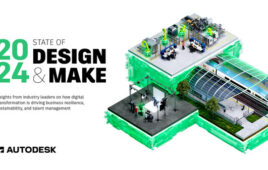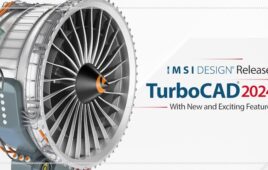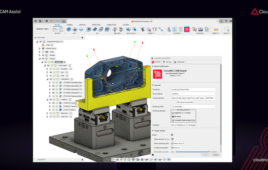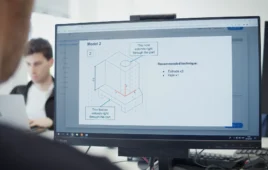Pointwise announces the latest release of its Pointwise computational fluid dynamics (CFD) meshing software featuring an extension of the company’s advanced T-Rex hybrid meshing technique to generate near-wall layers of hexahedral cells.
“As our T-Rex technique for generating hybrid prism-tet meshes with boundary layer resolution continued to evolve, our customers collectively expressed a strong interest in using hex cells in the boundary layer instead of prisms,” said Dr. John Steinbrenner, Pointwise’s vice president of research and development. ”Hex cells are generally thought to provide the basis for a more accurate CFD solution, plus there will be fewer hexes than tets so computations would be faster. Fortunately, post-processing T-Rex’s tet cells into hexes (12 tets per hex) was a natural extension of the existing tet-to-prism combination algorithm.“
This hybrid mesh for the X-38 re-entry vehicle was generated using the latest version of Pointwise’s T-Rex technique and consists of a layer of unstructured hexahedra (green) extruded off the quadrilateral surface mesh (yellow) and connected to the farfield tetrahedra (blue) by pyramids. The orange cells are hexahedra on the symmetry plane. Not shown are prisms extruded off triangles on the vehicle’s base.
T-Rex (anisotropic tetrahedral extrusion) is a highly automated, advancing layer technique for generating a CFD mesh with boundary layer and wake resolution. The technique extrudes layers of high-aspect ratio, right-angle-included tetrahedra outward from a surface mesh. A post-processing operation sequentially combines three successive tetrahedra into a stack of prisms. In this new release of the technique, extrusion from a quadrilateral surface mesh begins with a single pyramid, after which the usual tet extrusion begins. The resulting tets (and that first pyramid) are post-processed into stacks of hexes.
“This new hex capability in T-Rex is just the first step of many that will vastly expand the scope of mesh types that Pointwise can generate,” said John Chawner, Pointwise’s president. “We look forward to customer feedback on this first release of unstructured hex cell generation in T-Rex to guide further developments.”
Pointwise Version 17.2 also includes updated compatibility with CGNS, FUN3D, ANSYS Gambit, STAR-CD, and SC/Tetra; support for the OpenSUSE, Ubuntu, and CentOS Linux distributions; several productivity improvements; and defect corrections.
Pointwise
www.pointwise.com
Filed Under: 3D CAD World




